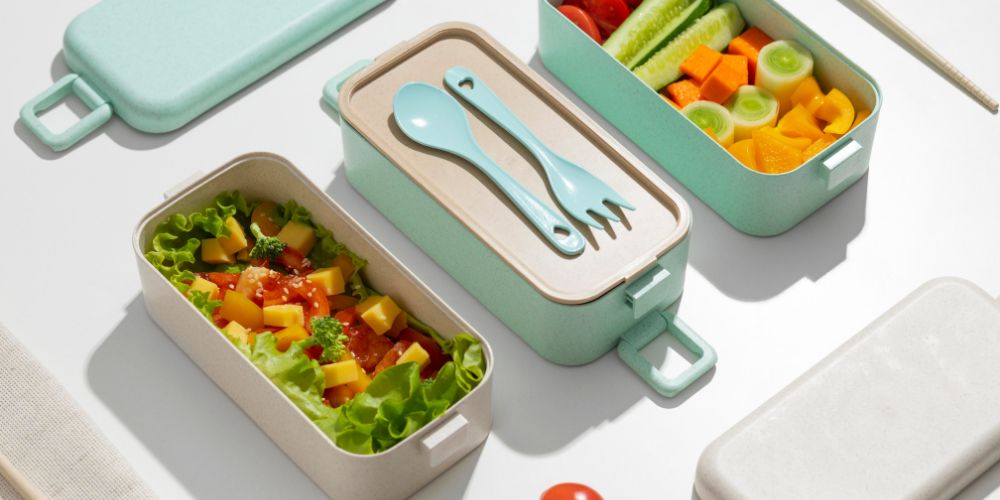
In recent years, the issue of waste generation has escalated into a global concern, with far-reaching impacts on our environment. Landfills swell with refuse, and oceans brim with debris, painting a grim picture of the ecological footprint left by modern consumption patterns. Central to this issue is the prevalence of single-use plastic containers – a convenience with a costly legacy. These disposables, often used once and discarded, contribute significantly to environmental pollution and resource depletion.
Amidst this backdrop, reusable food container boxes emerge as a beacon of sustainability. These containers, designed to withstand multiple uses, offer a practical solution to the mounting waste problem. Not only do they minimize the reliance on single-use plastics, but they also present a cost-effective alternative for consumers. By investing in reusable options, individuals can play an active role in reducing waste, curbing environmental impact, and fostering a culture of sustainability.
Embracing reusable containers is more than a personal choice; it's a collective stride toward environmental stewardship. By opting for reusables, we actively divert a significant amount of waste from landfills. Each reusable container can replace hundreds, if not thousands, of single-use packages, thereby reducing the volume of refuse that contributes to the ever-growing landfill sites.
Moreover, the production of single-use packaging is resource-intensive, often involving the extraction of finite resources like petroleum, which is used to make plastics. Reusable containers significantly cut down on this reliance, promoting a more sustainable use of our natural resources.
Lastly, the lifecycle of reusable containers entails a lower carbon footprint compared to their disposable counterparts. The energy and resources expended in manufacturing single-use items, coupled with their transportation and eventual disposal, cumulatively result in a substantial release of greenhouse gases. In contrast, reusables, which are used multiple times over an extended period, present a more climate-friendly alternative by minimizing the total emissions peruse.
Switching to reusables offers economic benefits such as cost savings for businesses, minimal labor costs for maintenance, increased customer satisfaction, and enhanced brand loyalty. It\'s a sustainable choice that aligns with consumer preferences and can lead to long-term financial advantages.
While there is an initial investment required for acquiring reusable rectangle plastic food containers, this cost is offset over time by long-term savings. By investing in durable, reusable containers, you eliminate the need for frequent purchases of disposable ones. This not only saves money but also contributes to a reduction in waste.
Reusable containers encourage better food management. By planning meals ahead and storing leftovers in these containers, you can significantly minimize food spoilage. This practice not only conserves resources but also reduces the amount of wasted food, which translates to economic savings and environmental benefits.
Choosing the right reusable containers involves considering materials like glass, stainless steel, or silicone for their unique benefits such as durability and temperature resistance. Size is also key; opt for various container sizes to suit different needs, from lunchboxes to snack pots, ensuring they fit your lifestyle and storage requirements.
When selecting reusable containers, the material is a crucial factor. Here are some popular choices:
Consider factors like durability, temperature resistance, and ease of cleaning when choosing the material. Each has its benefits, so think about your lifestyle and which features matter most to you.
The size and functionality of your round plastic food container should align with your storage needs:
Remember, the right container not only preserves your food but also fits seamlessly into your daily routine.
Reusable containers aid in meal prepping and portion control, promoting healthy eating. Proper cleaning maintains their longevity—dishwasher for glass, handwash for plastic. Stackable, leak-proof designs ease carrying while nesting, and lid organization optimizes storage.
In our journey towards a greener planet and a thicker wallet, the adoption of reusable food container boxes stands out as a beacon of practicality and responsibility. EnvironmentallyThese containers are a testament to our commitment to reducing waste. By opting for durability over disposability, we significantly cut down on the amount of plastic and paper that clogs our landfills and pollutes our oceans.
Financially, the initial investment in reusable containers often pays for itself. Instead of repeatedly purchasing single-use options, a one-time purchase of a sturdy set can last for years. This not only saves money but also spares us from the hidden costs associated with waste management and environmental cleanup.
By embracing reusable food containers, we take a decisive step towards a lifestyle that values sustainability and cost-efficiency. Let\'s unite in making the switch to reusable options, not just for our own benefit, but for the health of our planet and the well-being of future generations. Together, we can make a difference—one container at a time.